PropTrack has released rental vacancy rates for July which shows that the national vacancy rate rose by 0.18% over the quarter, driven by the capital cities, which recorded a 0.24% quarterly increase:
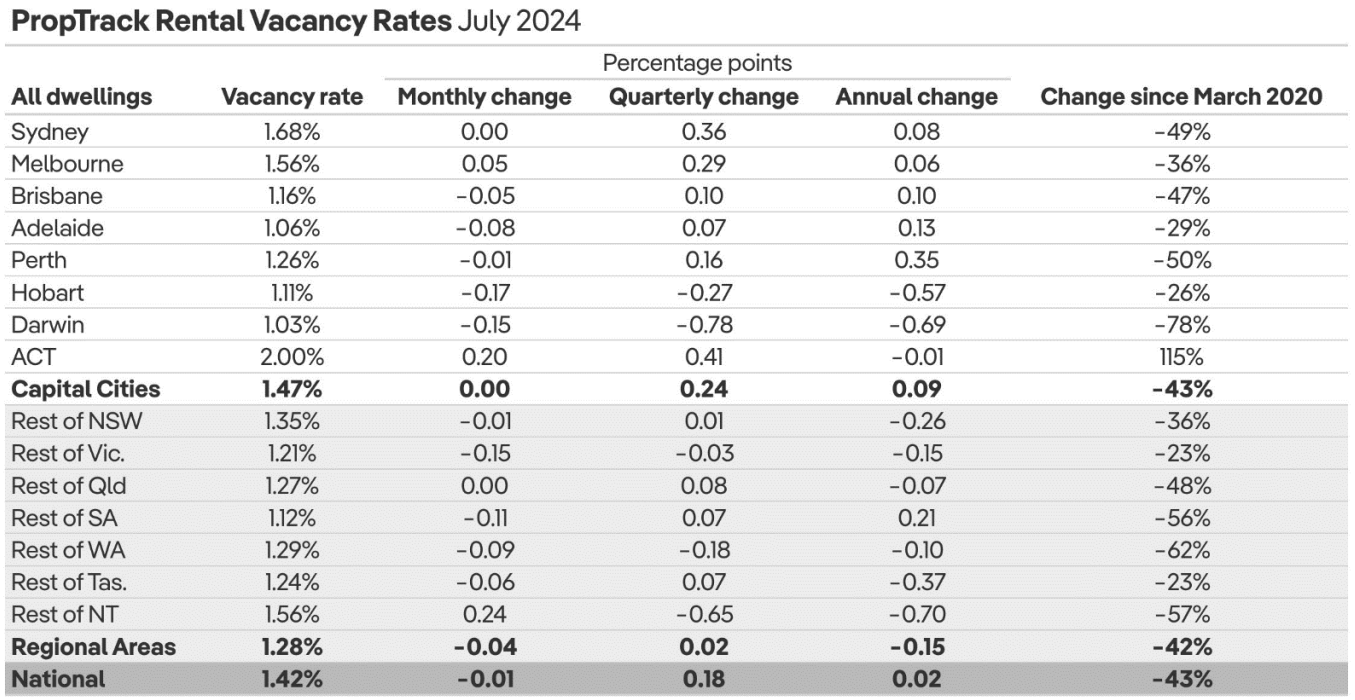
SQM Research also released its rental vacancy rate series, which remained steady at 1.3%:
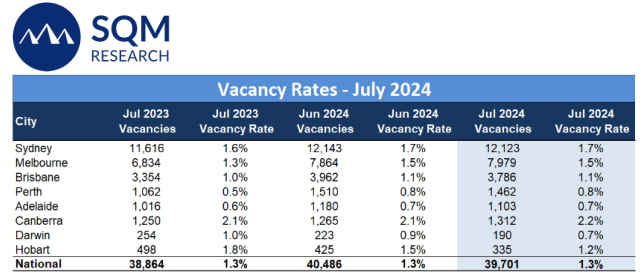
However, capital city asking rents recorded the largest monthly rental falls since the outbreak of the pandemic with a combined dwelling rent decline of 0.5% for the capital cities over the past 30 days to 12th of August.
“For the past 30 days, SQM Research has recorded the largest decline in capital city rents since the days of 2020 when Covid first hit the country”, SQM Research managing director Louis Christopher said.
“The falls were broad based, with the larger falls recorded in our larger capital cities and regional coastal locations”.
“It should be noted of course that rents are still very high and this retracement is minor compared to the massive rise in rents recorded around the country since 2021. And it should also be stated that the rental crisis is still not yet over as we have recorded an ongoing low national rental vacancy rate of just 1.3%”
“But still, this will be somewhat welcoming to tenants and as a research house, we do believe the market rental rises of 10 to 20% per annum are now over”, Christopher said.
PropTrack senior economist, Anne Flaherty, attributed the quarterly easing of vacancy rates to more investor activity.
“While conditions remain incredibly tough for Australia’s renters, rental supply has improved over the past three months, with the national vacancy rate rising 0.18ppt to 1.42%”.
“Capital cities have seen the largest improvement, with vacancy up in six of the eight cities over the quarter”.
“Supporting the rise in capital city vacancies has been an increase in investor activity, with the number of new loan commitments to investors up 25% over the June quarter of 2024 compared to the same period last year”.
“Higher investor activity has resulted in more rental properties hitting the market, helping to counteract the increase in demand from population growth”.
I do not agree with this conclusion. As illustrated in the following chart from Justin Fabo at Antipodean Macro, the overwhelming majority of investors purchase established properties:
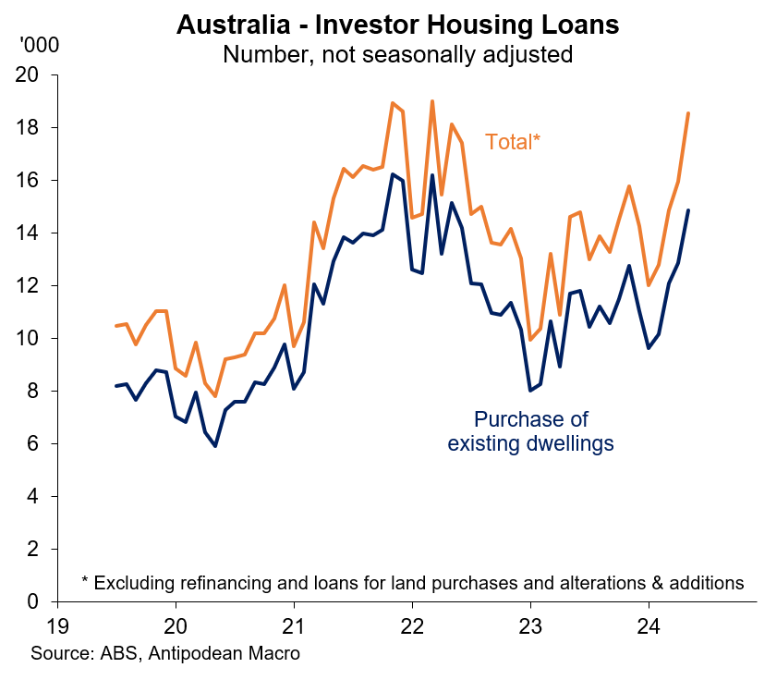
Therefore, investors largely replace homes for sale with homes to let, which doesn’t improve the overall rental supply-demand equation.
Indeed, the rise in investor borrowing has crowded-out first home buyer borrowing:
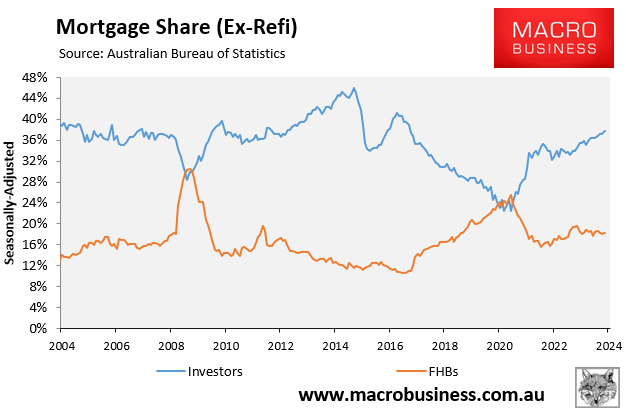
This suggests that out-bid first home buyers have been forced into renting from investors.
The more likely explanation of why the rental vacancy rate has improved comes down to affordability.
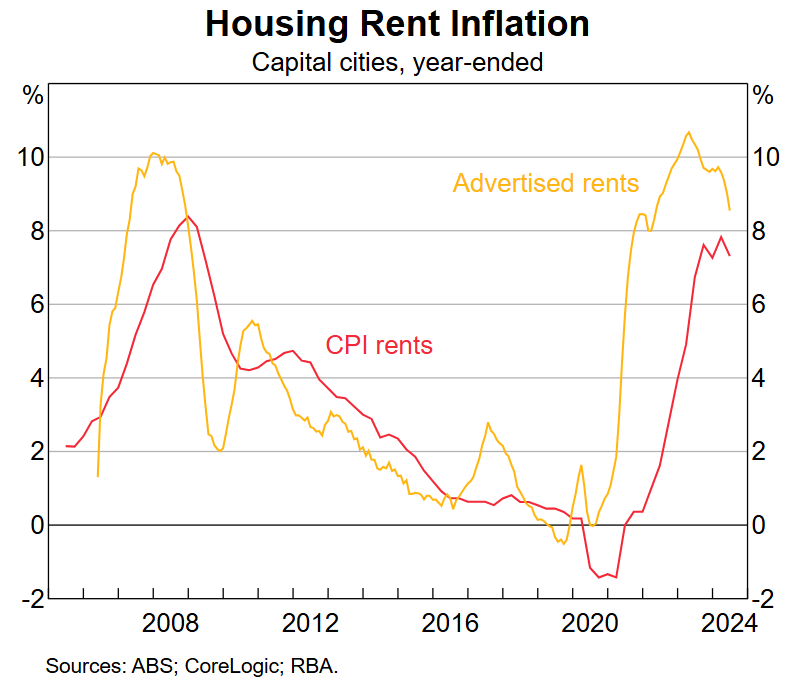
Rents have soared over recent years, driving more renters into shared housing arrangements.
The latest Statement of Monetary Policy (SoMP) from the RBA showed that “average household size has increased further in recent months, possibly in response to affordability constraints”:
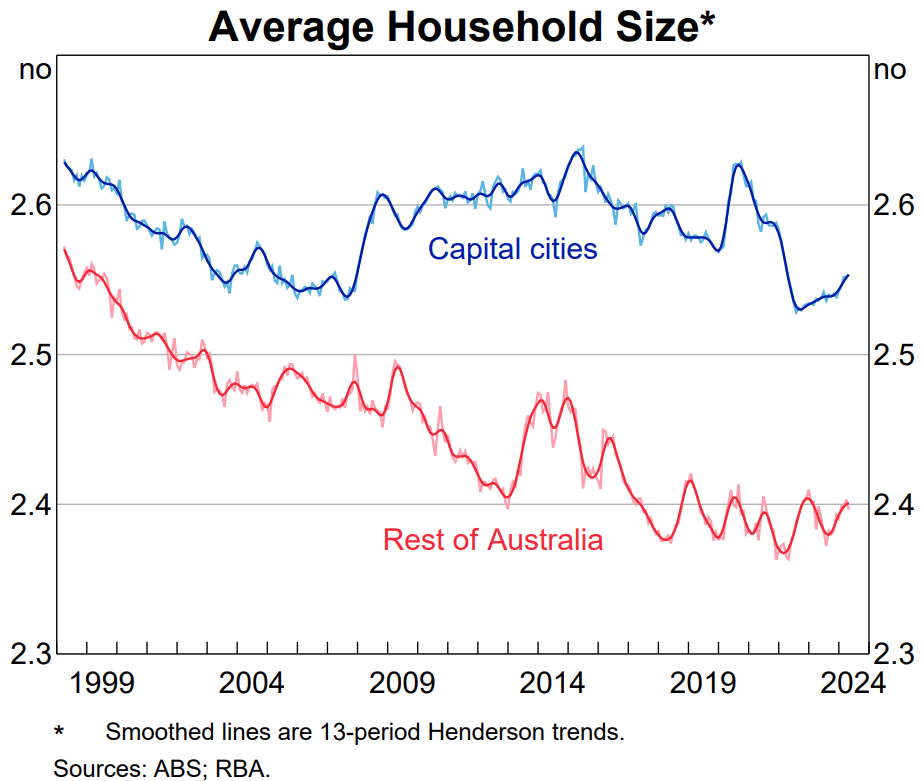
It is also worth pointing out that, unlike mortgages, rents cannot be leveraged. This means that rental growth is more closely tied to household income, which limits its potential increase.
Even so, given that net overseas migration remains historically high at the same time as dwelling construction rates are falling, Australia’s rental crisis will continue for the foreseeable future.
Indeed, the RBA SoMP warned that “CPI rents inflation is likely to be high for some time”.

